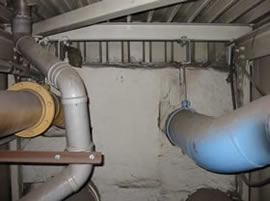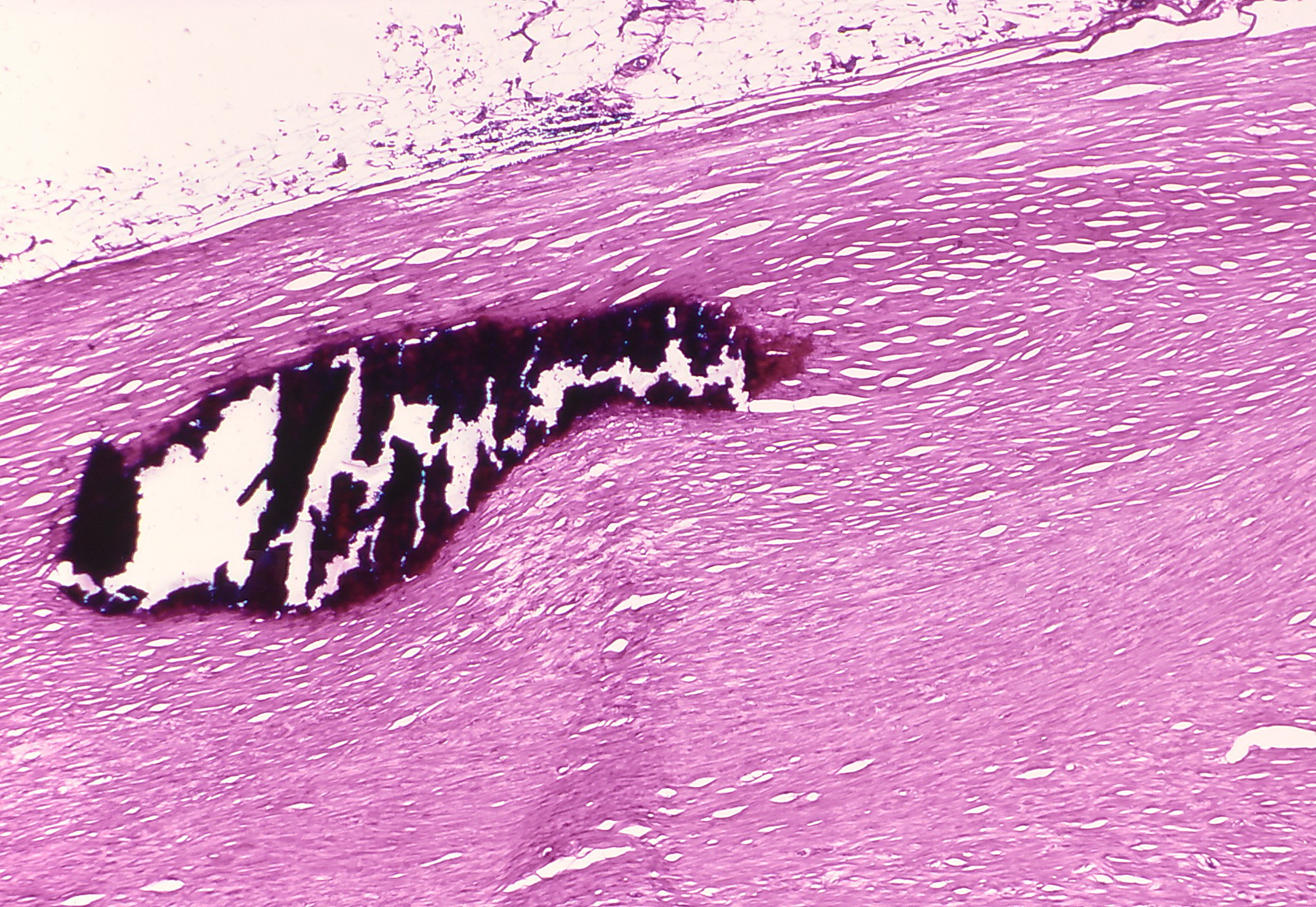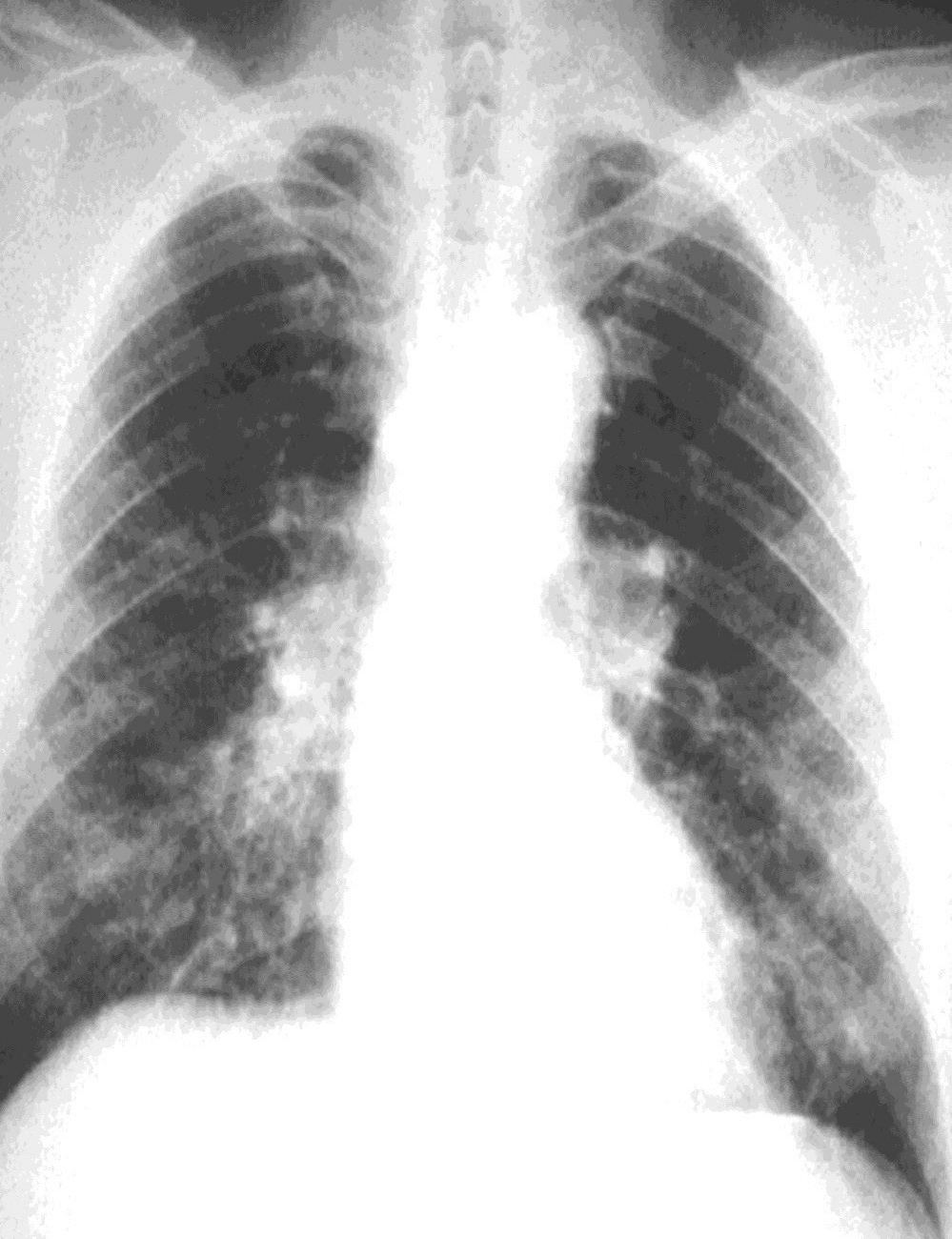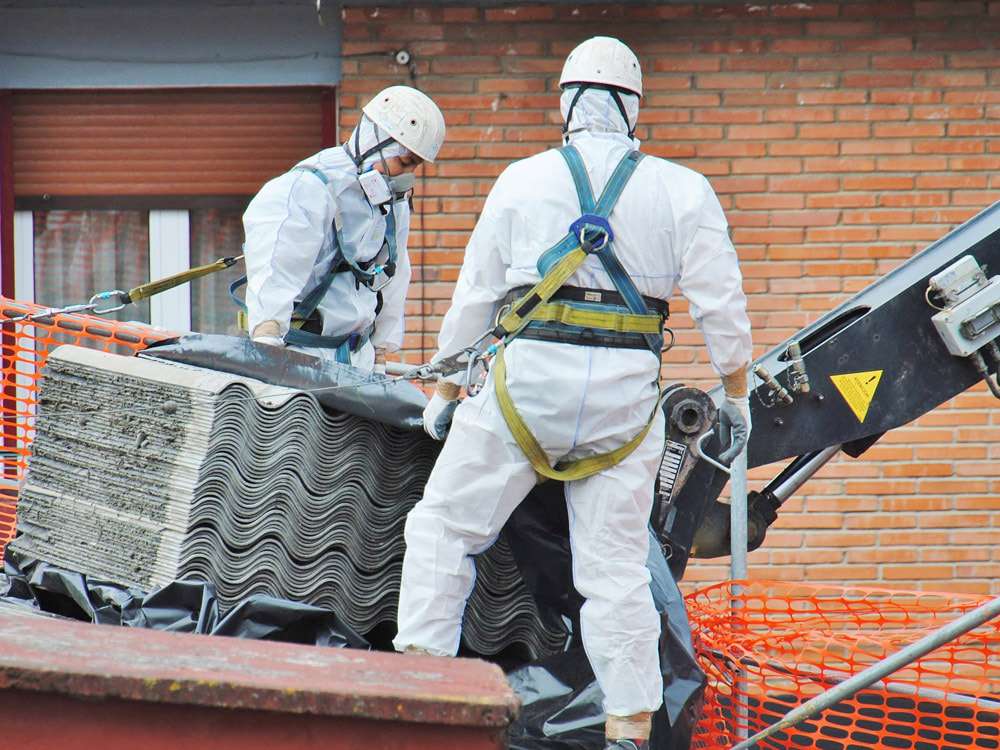Asbestosis is a chronic lung disease caused by inhaling asbestos fibers over an extended period. It is a serious health concern that can lead to respiratory problems and even life-threatening conditions. In this article, we will explore the causes, symptoms, diagnosis, and treatment of asbestosis.
Understanding Asbestos
What is Asbestos?

Asbestos is a naturally occurring mineral that has been widely used in various industries due to its exceptional properties. It consists of fine, durable fibers that are heat-resistant, fire-resistant, and have excellent insulating qualities. Because of these attributes, asbestos found its way into numerous building materials, such as roofing, insulation, flooring, and cement, during the 20th century. Its widespread use was prevalent in construction and manufacturing industries, making it a staple in many products.
However, despite its usefulness, asbestos poses a severe health risk when its fibers become airborne and are inhaled. Prolonged exposure to these microscopic fibers can lead to various respiratory diseases, including asbestosis, lung cancer, and mesothelioma. Asbestos-related illnesses often have a long latency period, meaning symptoms may not appear until decades after initial exposure. Due to its harmful effects on human health, the use of asbestos has been significantly restricted and regulated in many countries to protect workers and the general public from its hazardous consequences.
The History of Asbestos Usage

The usage of asbestos actually dates back thousands of years, with evidence of its utilization in ancient civilizations. Asbestos was prized for its remarkable properties, including heat resistance and durability, making it an ideal material for various applications. Ancient Egyptians, Greeks, and Romans used asbestos in pottery, clothing, and even embalming procedures. Its ability to withstand high temperatures led to its incorporation in lamp wicks and fireproofing materials.
In more recent history, asbestos saw significant industrial use during the 19th and 20th centuries. The industrial revolution fueled the demand for asbestos, and its versatility made it a popular choice for insulation in steam engines, pipes, and boilers. Its use peaked in the mid-20th century during the construction boom, where it became a standard component in building materials. However, by the latter half of the 20th century, the health hazards associated with asbestos exposure became evident, leading to regulations and restrictions on its use in many countries to protect workers and the public from the potential risks. Despite its historical importance, the legacy of asbestos use serves as a cautionary tale about the importance of prioritizing human health and safety in the face of technological advancements.
Identifying Asbestos Materials

Identifying asbestos-containing materials (ACMs) is crucial in ensuring the safety of individuals who may come into contact with them. Asbestos was extensively used in various construction materials due to its fire-resistant and insulating properties, which means that many older buildings may still harbor these hazardous substances. To identify potential ACMs, it is essential to consider the age of the building, as those constructed before the late 1980s are more likely to contain asbestos. Common ACMs include ceiling tiles, floor tiles, insulation, roofing materials, and cement products.
A visual inspection alone is not be sufficient to determine the presence of asbestos, as the fibers are often microscopic. If there is suspicion of ACMs, it is crucial to seek professional assistance from qualified asbestos inspectors and laboratories. These experts can take samples of suspect materials and analyze them using polarized light microscopy or transmission electron microscopy to accurately identify the presence and concentration of asbestos fibers. Proper identification is the first step in developing effective management and removal plans to mitigate the risks associated with asbestos exposure.
Causes of Asbestosis
Prolonged Exposure to Asbestos

Prolonged exposure to asbestos can have severe and potentially life-threatening health effects. When asbestos-containing materials are disturbed or deteriorate over time, tiny asbestos fibers can be released into the air and inhaled into the lungs. Once inside the respiratory system, these microscopic fibers can become lodged in the lung tissues, leading to chronic inflammation and scarring. Over time, this scarring can impair lung function, causing respiratory difficulties and reducing the lungs’ ability to exchange oxygen and carbon dioxide effectively.
One of the most well-known health consequences of prolonged asbestos exposure is asbestosis, a progressive and incurable lung disease. Asbestosis is characterized by fibrosis (scar tissue formation) in the lungs, which can result in persistent coughing, chest pain, and shortness of breath. The disease usually develops several years or even decades after initial exposure and can lead to significant disability and reduced quality of life. Moreover, prolonged asbestos exposure is also linked to an increased risk of developing lung cancer and mesothelioma, a rare but aggressive cancer that affects the lining of the lungs, abdomen, or heart. The devastating health effects of asbestos exposure highlight the critical importance of proper asbestos management and abatement to protect individuals from its potential hazards.
Occupations at High Risk

Certain occupations have historically been at a higher risk of asbestos exposure due to the nature of their work and the prevalent use of asbestos-containing materials in their industries. Construction workers, especially those involved in renovation and demolition projects of older buildings, face a significant risk of asbestos exposure. Asbestos was widely used in construction materials, such as insulation, roofing, and flooring, before its health hazards were fully understood. As these materials deteriorate or are disturbed during construction activities, asbestos fibers can become airborne, putting workers at risk of inhaling them.
Shipyard workers are another group at high risk of asbestos exposure. Until the 1970s, ships were heavily insulated with asbestos to prevent fires and provide thermal insulation. As a result, shipyard workers involved in shipbuilding, repair, and demolition were exposed to high levels of asbestos fibers. Similarly, individuals working in manufacturing industries, particularly those involved in producing asbestos-containing products, were also exposed to the hazardous fibers during the manufacturing process. Despite increased awareness and regulations surrounding asbestos use, individuals in certain occupations still face potential exposure, emphasizing the need for ongoing safety measures and asbestos awareness training to protect workers from this harmful mineral.
Home and Office Exposure

Asbestos exposure in homes and offices can occur when old products containing asbestos fibers become disturbed, damaged, or deteriorate over time. Many older buildings, especially those constructed before the 1980s, may still contain asbestos in various forms. Common sources of asbestos in homes include ceiling tiles, insulation, textured coatings, and vinyl floor tiles. In offices, asbestos may be present in ceiling tiles, pipe insulation, drywall joint compound, and HVAC duct insulation. If these materials are disturbed during renovation, repair, or even routine maintenance work, asbestos fibers can be released into the air, leading to potential exposure.
Home DIY projects can also pose risks of asbestos exposure, as homeowners may unknowingly encounter asbestos-containing materials while making changes to their properties. For instance, drilling, sanding, or cutting into walls or ceilings that contain asbestos can release fibers into the air. Also, some older appliances, such as stoves and heating systems, may have asbestos insulation, and improper handling or removal of these appliances can result in asbestos exposure. To minimize the risk, it’s crucial for homeowners and office occupants to be aware of the potential presence of asbestos in their buildings and seek professional assistance before undertaking any construction or renovation activities that may disturb ACMs. Regular inspections and maintenance by qualified experts can also help identify and manage asbestos-containing materials in a safe and controlled manner.
Symptoms of Asbestosis
Respiratory Difficulties
One of the hallmark symptoms of asbestosis is respiratory difficulties. As the asbestos fibers lodge themselves in the lung tissues, they cause chronic inflammation and scarring, leading to a condition known as pulmonary fibrosis. This scarring restricts the expansion of the lungs, making it progressively harder for the affected individual to breathe. People with asbestosis may experience shortness of breath, particularly during physical activities, and this breathlessness can worsen over time. Climbing stairs or walking long distances may become increasingly challenging, significantly impacting daily life and overall well-being.
Persistent Coughing

A persistent, dry cough is another common symptom of asbestosis. The inhalation of asbestos fibers irritates the lung lining, leading to continuous coughing as the body attempts to clear the airways. The cough may be non-productive, meaning it does not produce any phlegm, but it can be persistent and disruptive. As the disease progresses, the cough may worsen and become more frequent, interfering with sleep and causing discomfort.
Chest Tightness and Pain
Asbestosis can cause chest tightness and pain, which can be distressing for individuals affected by the condition. The scarring of lung tissues and the resulting restriction of lung expansion can lead to a feeling of tightness or pressure in the chest. Some people may also experience chest pain, which can range from mild discomfort to more severe pain. The chest pain is typically caused by the strain on the lung tissues due to reduced lung function.
Fatigue and Weakness

As the lungs become less efficient in supplying oxygen to the body, individuals with asbestosis may experience fatigue and weakness. The reduced oxygen levels in the blood can lead to feelings of tiredness and a lack of energy, even with minimal physical exertion. This fatigue can be debilitating and may interfere with daily activities, affecting work performance and overall quality of life.
Finger Clubbing
In some cases of asbestosis, finger clubbing may occur. This condition involves the enlargement and rounding of the fingertips, giving them a characteristic appearance. Finger clubbing is thought to be related to the chronic lack of oxygen in the blood and can be an indicator of advanced asbestosis.
Diagnosis of Asbestosis
Medical History and Physical Examination

The initial step in diagnosing asbestosis involves a comprehensive medical history and physical examination. The healthcare provider will inquire about the individual’s occupational history, including any past or current exposure to asbestos in the workplace or other environments. They will also ask about any respiratory symptoms, such as shortness of breath, persistent cough, and chest pain, which are common indicators of asbestosis. Additionally, the medical history will include information about any other risk factors, such as smoking or exposure to other respiratory irritants.
During the physical examination, the healthcare provider will listen to the lungs with a stethoscope to detect any abnormal sounds, such as crackles or wheezing. They may also assess finger clubbing, which is the enlargement and rounding of the fingertips, sometimes associated with advanced asbestosis. A thorough evaluation of the patient’s medical history and physical symptoms is essential in guiding further diagnostic tests and determining the most appropriate course of action.
Chest X-rays and CT Scans

Chest X-rays and CT scans are crucial imaging tools used to aid in the diagnosis of asbestosis. Chest X-rays can reveal characteristic findings, such as “pleural plaques” – localized areas of thickening on the lining of the lungs or diaphragm. However, X-rays may not always detect early-stage asbestosis, and CT scans provide more detailed images of the lungs, making them particularly useful for identifying early changes caused by asbestos exposure.
On CT scans, radiologists may observe “reticular opacities” – irregular lines or patterns in the lung tissues, indicating fibrosis or scarring. The presence and extent of these abnormalities can help determine the severity of asbestosis. Both chest X-rays and CT scans are valuable tools in diagnosing asbestosis and are often used in conjunction with other diagnostic tests to provide a comprehensive assessment of the lung condition.
Pulmonary Function Tests
Pulmonary function tests (PFTs) are a series of breathing tests designed to assess how well the lungs are functioning. These tests measure various aspects of lung capacity and efficiency, providing valuable information about the extent of lung damage caused by asbestosis. One common PFT is spirometry, which measures the amount of air the patient can inhale and exhale and how quickly they can do so.
In asbestosis, the PFT results may show reduced lung volumes and impaired airflow, indicating restrictive lung disease. This means the lungs are less able to expand fully, reducing their ability to take in oxygen and expel carbon dioxide efficiently. PFTs help quantify lung impairment, track disease progression, and guide treatment decisions.
Complications
Asbestosis and Mesothelioma

One of the most concerning complications of asbestosis is its association with mesothelioma, a rare and aggressive form of cancer that affects the mesothelial lining of the lungs, abdomen, or heart. Prolonged exposure to asbestos increases the risk of developing mesothelioma, and individuals diagnosed with asbestosis are at a higher risk of this malignancy. Mesothelioma has a long latency period, and symptoms may not manifest until several decades after initial asbestos exposure. Early diagnosis and aggressive treatment are essential in managing mesothelioma, but the prognosis is often challenging due to the advanced stage of the disease by the time it is detected.

Figure B shows lungs with asbestos-related diseases, including pleural plaque, lung cancer, asbestosis, plaque on the diaphragm, and mesothelioma.
Increased Risk of Lung Cancer
Asbestosis also heightens the risk of developing lung cancer, particularly among individuals who are smokers or have a history of smoking. Asbestos fibers, when inhaled, can cause chronic inflammation and cellular damage in the lung tissues, creating an environment conducive to the development of cancerous cells. The combination of asbestos exposure and smoking synergistically increases the risk of lung cancer, making it vital for those with a history of asbestos exposure to avoid smoking and for current smokers to quit immediately. Early detection through regular medical check-ups and screening is crucial for improving the outcomes of lung cancer cases associated with asbestosis.
Pleural Plaques and Effusions
In addition to mesothelioma and lung cancer, asbestosis can lead to the development of pleural plaques and effusions. Pleural plaques are areas of localized thickening and scarring on the pleura, the lining that surrounds the lungs. While they may not cause immediate health issues, their presence is an indication of asbestos exposure and an increased risk of more serious complications. Pleural effusions, on the other hand, occur when fluid accumulates in the space between the layers of the pleura, leading to chest pain and breathing difficulties. These effusions can be uncomfortable and require medical intervention to alleviate symptoms and manage potential complications.
Treatment Options and Managing Asbestosis
There is no cure for asbestosis, but various treatment options aim to manage symptoms, improve lung function, and enhance the overall quality of life for individuals affected by this condition.
Lifestyle Changes and Home Remedies

One of the primary goals of asbestosis treatment is to reduce further exposure to asbestos and other respiratory irritants. Individuals diagnosed with asbestosis are advised to avoid smoking and exposure to secondhand smoke, as smoking can exacerbate lung damage and increase the risk of developing lung cancer. Maintaining a healthy lifestyle that includes regular exercise, a balanced diet, and adequate hydration can also support lung function and overall well-being.
Home remedies, such as using a humidifier to moisten the air and staying well-hydrated, can help alleviate respiratory symptoms like dry cough and shortness of breath. Managing stress and anxiety can also have a positive impact on respiratory function, as stress can exacerbate breathing difficulties. However, it is essential for individuals with asbestosis to consult their healthcare providers before trying any home remedies to ensure they are safe and appropriate for their specific condition.
Medications for Symptomatic Relief

Various medications can provide symptomatic relief and improve the quality of life for individuals with asbestosis. Bronchodilators, such as inhalers, help open the airways and facilitate breathing, especially during periods of shortness of breath or wheezing. Corticosteroids may be prescribed to reduce lung inflammation and ease symptoms, although their long-term use may have side effects and is carefully monitored.
Antibiotics may be prescribed if there is a secondary bacterial infection, which can exacerbate respiratory symptoms in individuals with compromised lung function. Additionally, managing other conditions that can contribute to respiratory distress, such as gastroesophageal reflux disease (GERD), can help improve breathing and reduce coughing.
Oxygen Therapy

In cases of severe asbestosis where oxygen levels in the blood are significantly reduced, oxygen therapy may be necessary. Supplemental oxygen can improve the amount of oxygen delivered to the body’s tissues and alleviate symptoms of breathlessness and fatigue. Oxygen therapy can be administered through a nasal cannula or a face mask, depending on the individual’s oxygen needs. Regular monitoring and adjustments to the oxygen flow rate are essential to ensure optimal benefits and avoid potential complications.
Pulmonary Rehabilitation
Pulmonary rehabilitation programs are designed to help individuals with lung diseases like asbestosis improve their lung function and physical endurance. These programs may include a combination of exercise training, breathing techniques, and education about managing respiratory symptoms and conserving energy. Pulmonary rehabilitation can significantly enhance the overall well-being of individuals with asbestosis and enable them to better cope with their condition.
Infection Prevention
Affected individuals are more vulnerable to respiratory infections. Protection against preventable respiratory illnesses, such as influenza and pneumonia, is crucial to avoid complications. Remaining as healthy as possible, maintaining a good balanced diet and practicing good hygiene, such as frequent hand-washing and avoiding close contact with sick individuals during flu season, can help prevent infections.
Emotional Support and Mental Well-being

Living with a chronic lung disease like asbestosis can be emotionally challenging. Feelings of anxiety, stress, and depression are common among individuals facing health uncertainties. Seeking emotional support from friends, family, or support groups can provide a valuable outlet to share experiences and feelings. Mental health counseling or therapy may also be beneficial in helping individuals cope with the emotional aspects of living with asbestosis. Staying engaged in activities that bring joy and fulfillment can help maintain a positive outlook and enhance mental well-being.
Smoking Cessation
For individuals with asbestosis who smoke or have a history of smoking, quitting smoking is paramount. Smoking further damages the lungs and exacerbates the respiratory symptoms associated with asbestosis. Quitting smoking can slow the progression of lung damage and reduce the risk of developing lung cancer, which is a severe complication of asbestosis. Healthcare providers can offer guidance and support to individuals trying to quit smoking, including counseling and medication options.
Monitoring and Regular Check-ups

Regular medical check-ups are essential for individuals with asbestosis to monitor the progression of the disease and address any emerging health concerns promptly. Healthcare providers may perform lung function tests, such as spirometry and pulmonary function tests, to assess lung capacity and efficiency. Chest X-rays and CT scans may also be periodically performed to track any changes in lung tissue and identify potential complications early.
Prevention and Safety Measures
As the old saying goes, prevention is better than the cure. Asbestosis is entirely preventable by implementing effective safety measures and avoiding exposure to asbestos.
Avoiding Asbestos Exposure

The most effective way to prevent asbestosis is to avoid exposure to asbestos fibers. Asbestos is commonly found in older buildings constructed before the 1980s, where it was widely used for insulation, roofing, flooring, and other construction materials. Individuals living or working in such buildings should be aware of the potential risks and take necessary precautions.
If you suspect the presence of asbestos in your home or workplace, do not attempt to handle or disturb any materials that may contain asbestos. Instead, seek professional assistance from trained and certified asbestos inspectors and abatement professionals. They have the expertise and equipment to safely assess and handle asbestos-containing materials. Homeowners and workers should also be cautious during renovation or remodeling projects, as disturbing asbestos-containing materials can release dangerous fibers into the air.
Asbestos Abatement and Removal

When asbestos-containing materials are identified, appropriate asbestos abatement and removal procedures must be followed. Asbestos abatement involves sealing or encapsulating asbestos-containing materials to prevent fiber release and potential exposure. Complete removal of asbestos is the most effective way to eliminate the risk of exposure, but it must be carried out by licensed and trained professionals following strict safety protocols.
Asbestos abatement and removal procedures should be conducted in accordance with local and national regulations to ensure the safety of workers and the public. This process involves using specialized equipment, such as respirators and protective clothing, to prevent inhalation and skin contact with asbestos fibers. Proper containment and disposal of asbestos waste are also critical to prevent the spread of the hazardous material.
Workplace Safety Regulations

Occupational exposure to asbestos is a significant concern, as many workers may come into contact with asbestos-containing materials during their job duties. To protect workers’ health, workplace safety regulations and guidelines have been established in many countries to regulate the use of asbestos and ensure safe working conditions.
Employers are responsible for providing a safe working environment and implementing measures to minimize asbestos exposure. This includes conducting regular asbestos assessments and providing training to employees about the risks of asbestos and proper safety protocols. Employers should also provide personal protective equipment to workers who may encounter asbestos-containing materials during their work.
Legal and Compensation Aspects
In many cases, those diagnosed with asbestosis may be entitled to legal recourse and compensation due to the negligent exposure to asbestos that led to their condition.
Asbestos Litigation
Asbestos litigation refers to the legal process where individuals who have been harmed by asbestos exposure seek compensation from responsible parties. Asbestos-related lawsuits can be complex and challenging, as they often involve tracing exposure history back several decades. The legal claims typically target asbestos manufacturers, construction companies, employers, or building owners who may have negligently exposed individuals to asbestos-containing materials.
Asbestos litigation has a long history, and numerous lawsuits have been filed over the years on behalf of those suffering from asbestosis and other asbestos-related diseases. These lawsuits aim to hold accountable those responsible for the exposure, seeking financial compensation for medical expenses, lost wages, pain and suffering, and other damages caused by the disease. Successful asbestos litigation has played a crucial role in raising awareness about the dangers of asbestos and improving workplace safety regulations.
Seeking Legal Advice

If you or a loved one has been diagnosed with asbestosis, seeking legal advice from an experienced asbestos attorney is essential. Asbestos cases can be complex, and a skilled attorney can provide guidance and support throughout the legal process. An asbestos attorney will have the expertise to investigate and determine the source of asbestos exposure, build a strong case against the responsible parties, and represent the interests of the affected individual.
A qualified asbestos attorney can help navigate through various legal options, such as filing personal injury or wrongful death claims, depending on the circumstances. They will also be knowledgeable about the statute of limitations for filing claims, which can vary depending on the state and country. By seeking legal advice, individuals can ensure their rights are protected and have a better chance of obtaining fair compensation for their suffering.
Compensation for Victims
Compensation for asbestosis victims typically covers a range of damages resulting from the disease and its impact on their lives. Economic damages may include medical expenses, ongoing treatment costs, loss of income, and expenses related to in-home care or medical equipment. Non-economic damages may address pain and suffering, emotional distress, and loss of enjoyment of life.
In some cases, families of individuals who have lost their lives to asbestosis may be eligible to file wrongful death claims seeking compensation for their losses. Compensation can help alleviate the financial burdens associated with medical treatment and provide support for affected individuals and their families during challenging times.
Asbestosis is a debilitating lung condition caused by inhaling asbestos fibers. It poses a significant health risk to individuals who have been exposed to asbestos, especially in occupational settings. Early diagnosis, proper management, and preventive measures are essential to improve the quality of life for those affected by this disease. If you suspect asbestos exposure or experience symptoms related to asbestosis, it is crucial to seek medical attention promptly.
By spreading awareness about the causes, symptoms, diagnosis, and treatment options for asbestosis, we can take steps towards minimizing its impact on public health. Remember, prevention is the key to protecting ourselves and our loved ones from the dangers of asbestos exposure. Stay informed, stay safe.
